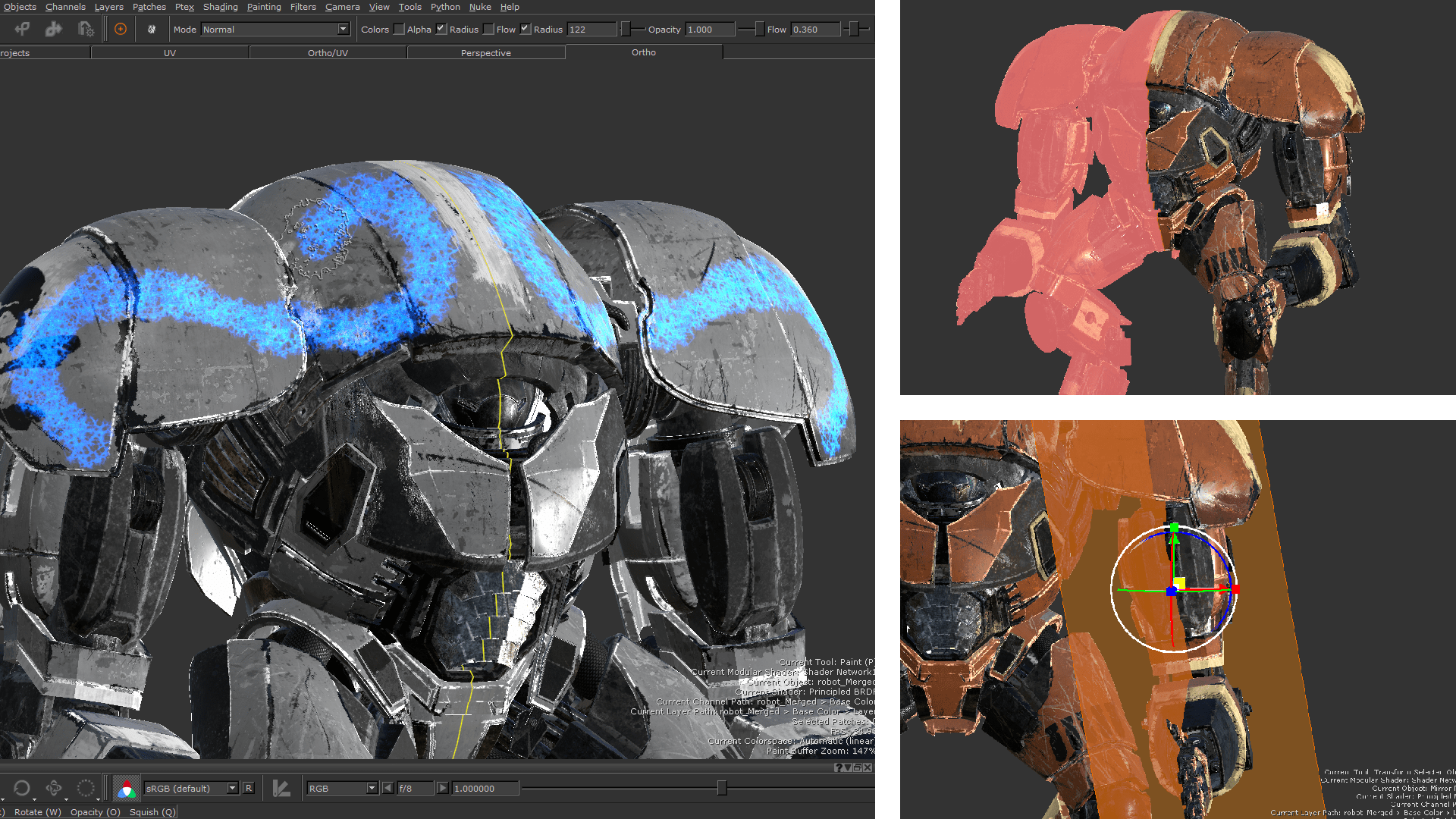Mari 4.2 Release notes

Mirrored projection
Mirror projection brings highly-requested simultaneous, symmetrical painting workflows to Mari, without the need for specialized UV layouts. Artists can paint on one side of a mirror plane while Mari projects the same paint to the other side of the mirror plane, dramatically increasing artist efficiency. Mirror masking prevents secondary projected paint overlapping across the mirror plane. By masking the opposite side of the mirror plane for each projection, the paint meets at the mirror plane with a perfectly reflected edge. The mirror plane can also be locked onto an object or locator, allowing the reflected edge of the mirror projection to be manipulated to the best symmetrical position and orientation.
Mari 4.1 View release notes

Here’s what’s new in Mari 4.1
Mari 4.1 brings improved color picking to achieve a WYSIWYG workflow; Scalar Channels and source images now display perceptually linear; a refreshed colorspace toolbar that shows the artist whether they’re viewing color or scalar data at a glance; and new visual indicators to define whether a Channel contains color or scalar data - as well as its bit depth - allowing the artist to easily manage Channel configurations. Improved color-space performance gives faster project load times and GPU accelerated procedurals; and that’s on top of a new filter for changing the color-space of a paint target, adding more flexibility to Mari's color workflows. Significant efficiencies have also been made to the way Selection Groups are managed.
It really is our main workhorse in the texturing department... It's the only package out there that lets you paint on such enormous heaps of geometry without lag. If you're in the Montreal Framestore texture team, 99% of the time, you're on Mari on most shows.
Adam Goldstein, lead texture artist on Blade Runner 2049 at Framestore